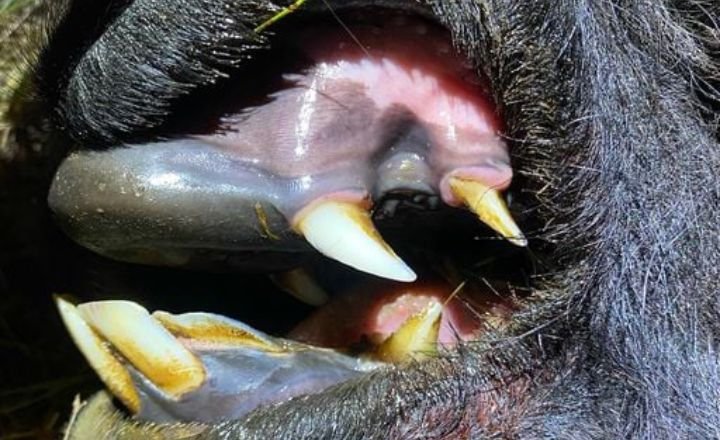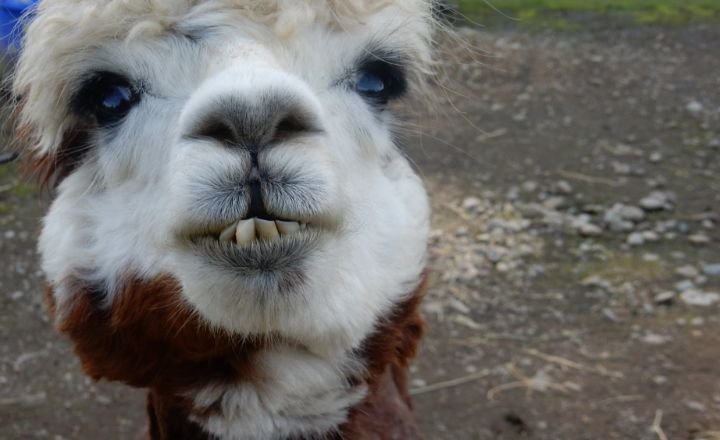Do alpacas have teeth, or do they rely on some mystical chewing magic to consume their food . Alpacas, with their endearing personalities and fluffy appearance, have captured the hearts of many animal lovers around the world.
These gentle creatures are known for their soft fleece and charming demeanour, but have you ever wondered about their dental anatomy.
Do Alpacas Have Teeth?
Do Alpacas Have Teeth a unique dental structure not only reflects their evolutionary lineage but also plays a crucial role in their daily lives. The fighting teeth, known as canine teeth, are utilised during aggressive interactions within the herd, showcasing the competitive nature of these otherwise gentle creatures.
The presence of continuously growing cheek teeth emphasises alpacas’ herbivorous diet and highlights their need for efficient chewing capabilities to process fibrous plant material.
Despite their rather unassuming appearance, alpacas’ dental composition serves as a testament to their resilience and adaptation in diverse environments.
The specialised dentition allows these charming animals to thrive in varying habitats, ranging from harsh mountainous terrains to lush meadows.
Delving into the intricacies of alpacas’ teeth, we gain a deeper appreciation for the remarkable evolutionary journey that has shaped these endearing camels into the beloved companions they are today.
Types of Alpaca Teeth and Purposes
Alpacas, with their endearing personalities and fluffy appearances, may not immediately bring to mind their unique dental structure. Yet, these creatures boast three distinct types of teeth that play vital roles in their digestive process and overall well-being.

The incisors, positioned at the front of their mouths, are primarily responsible for cutting and nibbling on grasses and vegetation. These front teeth enable alpacas to graze efficiently and maintain proper dental health.
Incisors
The unique biology of alpacas showcases the crucial role of their incisor teeth in the acquisition and consumption of food. These six lower jaw incisors, constantly worn down through chewing, highlight nature’s design for efficiency in feeding.
Deciduous incisors naturally shed by age four are replaced with permanent ones, the process mirrors the animal’s growth and changing dietary needs.

These specialised teeth enable alpacas to grasp and consume a diverse diet including grass, vegetation, fruits, and vegetables.
Molars
Alpaca molars play a crucial role in the digestive process, enabling these graceful animals to efficiently break down tough plant fibres and forage. The challenge lies in maintaining their dental health and wellbeing as they age.
Their vital function, alpaca molars often face issues such as gum disease and tooth abscesses due to uneven wearing. Vets and dentists must navigate the difficulties of working on these back teeth, requiring precision and expertise to address any dental problems that may arise.
As alpacas grow older, the wear and tear on their molars can lead to significant discomfort and complications with eating. This underscores the importance of regular dental check-ups for these gentle creatures to ensure their overall well-being.
Canine
The presence of canine teeth in both male and female alpacas sheds light on the intriguing aspect of their survival instincts and territorial behaviour. More commonly associated with male alpacas due to their larger size and aggression, it is fascinating to observe these sharp teeth as tools for dominance within the herd.

The serrated edges further enhance their effectiveness as weapons during confrontations, highlighting the inherent wild nature even in domesticated alpacas.
A razor-sharp canine emerges between the incisors and molars, one can’t help but marvel at the strategic evolution that aids alpacas in protecting themselves against predators or vying for dominance.
Conclusion
Do Alpacas Have Teeth , but their dental structure is unique compared to other animals. Understanding the anatomy and function of alpaca teeth is important for proper care and nutrition.
By providing appropriate dental care and monitoring their teeth regularly, alpaca owners can ensure the health and well-being of their animals. Despite having only lower incisors and premolars, alpacas are able to graze efficiently and maintain a balanced diet.
FAQs
Why don’t alpacas have top teeth?
Alpacas, like other camelids such as llamas and camels, have a unique dental structure that sets them apart from other mammals. Having top incisor teeth like most animals, alpacas have a hard dental pad on their upper jaw.
Can alpacas bite?
Yes, alpacas can bite. While they are generally gentle and docile animals, they may bite if they feel threatened or if they are in pain.
